In November 1923 a British squadron led by HMS Hood embarked on a world tour that took in key elements of Britain’s far-flung Empire and a range of Britain’s main trading partners. It was in many respects a repeat of the 1913 world tour by HMS New Zealand,[1] following a very similar route and with much the same ends in mind: a direct assertion of presence, both internally to Empire and externally to the world.[2] The diplomatic aspect was explicit: the Colonial Office even dispatched a special political advisor, Harry Batterbee, to directly support the commanding officer, Vice-Admiral Sir Frederick Field.[3]
The importance of the mission was given weight by the ships that took part. The Battlecruiser Squadron – re-organised and renamed the Special Service Squadron for the purpose of the cruise – was led by HMS Hood, the world’s largest warship. Thanks to the Five Power (‘Washington’) Treaty, she was likely to remain so for the foreseeable future, and by the early 1920s had enormous prestige value. She was joined by HMS Repulse and several light cruisers, initially including HMS Dunedin, which was on a delivery voyage to the New Zealand Division of the Royal Navy and accompanied the squadron as far as New Zealand.
HMS Hood arriving at Pipitea Wharf, Wellington, mid-morning 24 April 1924. Although unidentified by the holding archive and listed accordingly in the credit, it appears to be part of a series taken by Francis Thompson (1895-1977), owner of Wellington photography firm Crown Studios. Click for high-resolution, goes to National Library of New Zealand site. (Photographer unknown, silver gelatin print, Alexander Turnbull Library PAColl-6304-11)
What was formally known as ‘The Empire Cruise’ drew wide enthusiasm from across Britain’s far-flung Dominions and colonies, and among other things has left a unique collection of photographs of the two battlecruisers and their consorts. The ships were photographed from every angle by local enthusiasts and commercial photographers alike. One of the collections online is the set taken in Wellington, New Zealand, where Hood, Repulse and HMAS Adelaide arrived on 24 April 1924. These pictures have often circulated social media, frequently without credit or correct information. What’s also lost is the fact that many are available in high-resolution. A selection are provided with this article – click on the pictures to go through to the high-res versions on the National Library of New Zealand site. Note that usage in those resolutions requires permission from the library.
The visit to Wellington by the two battlecruisers of the Special Service Squadron, with the Australian cruiser HMAS Adelaide, was well heralded. It had been a wet night and the day dawned misty, but that did not prevent Wellingtonians flocking to the shoreline. Special barricades even had to be erected around the expected berths. The government steamer Tutanekai – the same vessel that had been tender to HMS New Zealand, 11 years earlier – sailed out to meet the incoming squadron, with a party of senior officials aboard. Around 9.30 am the heavy warships appeared, steaming through the narrow entrance to Port Nicholson. According to one journalist the ‘vast bulk’ of Hood was ‘an impressive sight’ with ‘hundreds of men’ lining the decks and the ship’s band playing ‘lively airs’.[4] The squadron rounded Point Jerningham, were pilots boarded the ships to take them into Lambton Harbour, where the two battlecruisers were berthed at the brand-new Pipitea Wharf. Special precautions were taken to protect Hood’s hull: she required fenders some 4 metres wide.[5]
HMS Hood at Pipitea Wharf, Wellington, some time between 24 April and 8 May 1924. Note the fender just visible at her bow reveals the distance at which Hood is berthed as a result of the anti-torpedo system built into her hull. This wharf was brand new at the time. The warehouse, Shed 35, is under construction, with the masts of HMS Repulse beyond. Although uncredited by the holding archive, this picture is virtually identical to another taken by Crown Studios and may be part of the same series. The wharf was later engulfed by reclamation as part of a major container port development. The shed remained, but was badly damaged by a Mw 7.8 earthquake that struck Wellington in November 2016 and subsequently demolished. Click for high resolution, goes to National Library of New Zealand site. (Photographer unknown, Alexander Turnbull Library 1/2-062599-F).
On board HMS Hood at Pipitea Wharf, Wellington, some time between 26 April and 6 May 1924, during which the ship was open to the public most afternoons. This is credited by the holding archive to James Hutchings Kinnear, an Auckland-based railway photographer, and given as such in the credit. Click for high resolution (goes to National Library of New Zealand site) (James Hutchings Kinnear, film negative, Alexander Turnbull Library 1/2-015263-F)
A party disembarking HMS Hood, taken by Francis Thompson of Crown Studios. Pen markings on the negative frame around this and the pictures below are reversed due to being written on the back of the negative. Click for high resolution (goes to National Library of New Zealand site) (Crown Studios, Alexander Turnbull Library, 1/2-204846-F)
An unidentified officer arrives aboard HMS Hood while in Wellington, taken by Francis Thompson of Crown Studios. Distance from the wharf when berthed is clear from this image. Click for high resolution (goes to National Library of New Zealand site) (Crown Studios, Alexander Turnbull Library, 1/2-204848-F).
Hood Street, Mount Victoria, Wellington, New Zealand. (Matthew Wright)
The visit was a tremendous success. Hood’s crew and officers were feted around town. There were formal dinners and parades. Local businesses and organisations showered them with gifts.[6] The crew took part in sports matches and social events in the city – even a draughts match hosted by the Wellington Working Men’s Club.[7] Hood’s piano was also sent ashore for overhaul by local music dealers and piano specialists Hamilton Nimmo & Sons, whose shop at the time was on Kent Terrace, not far from what became Hood Street. The instrument needed work: it had been aboard HMS Lion and gone through Jutland, subsequently being ‘pounded and thumped by officers and midshipmen’.[8] The ship also had a Broadwood player grand piano, on which fact local advertisers capitalised.
Meanwhile, Wellington’s City Council commemorated the visit by renaming a street in nearby Mount Victoria after Hood. What was then known as McKenzie Street was small, used locally as a thoroughfare to Oriental Parade below, with a flight of 71 steps at the end. At just 42 metres it was not much longer than HMS Hood was broad, and even with the steps included was not much more than a third the length of the ship. Still, the fact that a street was renamed at all underscores the profile of the visit.
Hood’s visit to Wellington ended at 6.45 am on Saturday 8 May 1924, when the two battlecruisers and their consort departed for Napier, Gisborne and then Auckland with New Zealand’s Governor General, Admiral of the Fleet Sir John Jellicoe, aboard Hood.[9]
Like and follow Matthew Wright on Facebook: https://www.facebook.com/MatthewWrightNZ
Buy Matthew Wright’s book The Battlecruiser New Zealand: a gift to Empire (USNI Press 2021)
Copyright © Matthew Wright 2023
[1] For details see Matthew Wright, The Battlecruiser New Zealand: A Gift to Empire, USNI Press, Annapolis, 2021. The 1924 voyage did not, of course, spend so much time in New Zealand.
[2] For discussion see, e.g. John C. Mitcham, ‘The 1924 Empire Cruise and the Imagining of an Imperial Community’, Britain and the World, March 2019, Vol. 12, No. 1.
[3] Batterbee later became the first British High Commissioner to New Zealand, in 1939.
[4] Star (Christchurch), 24 April 1924.
[5] Ibid.
[6] See, e.g. Dominion, 17 May 1924.
[7] Evening Post, 6 May 1924.
[8] Waikato Times, 17 May 1924.
[9] Star (Christchurch), 8 May 1924

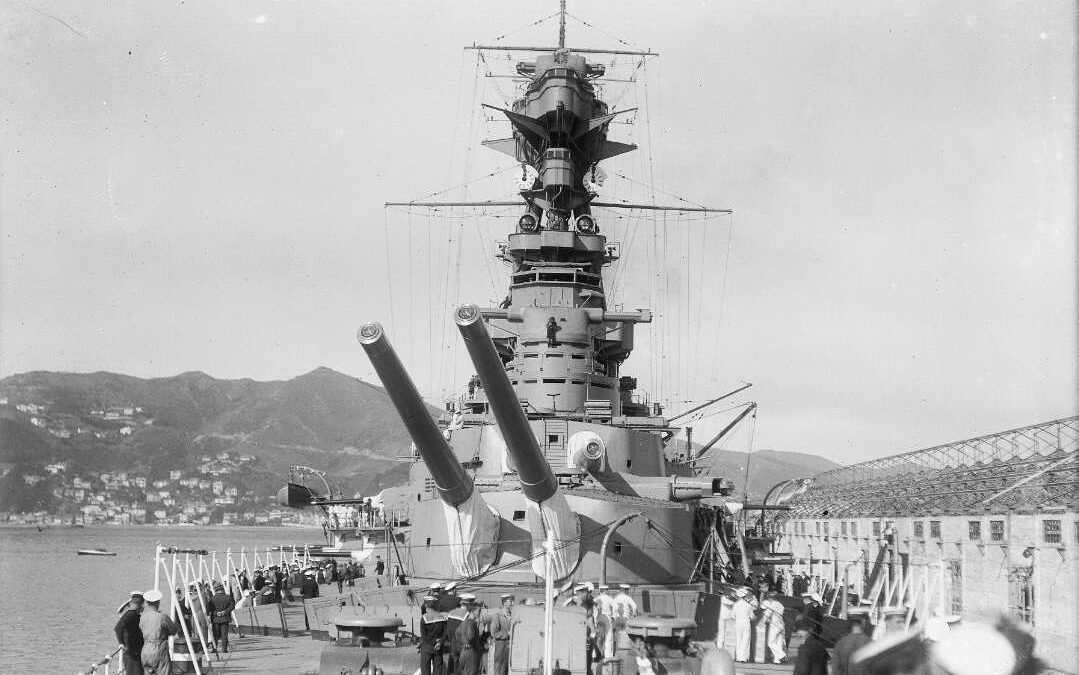
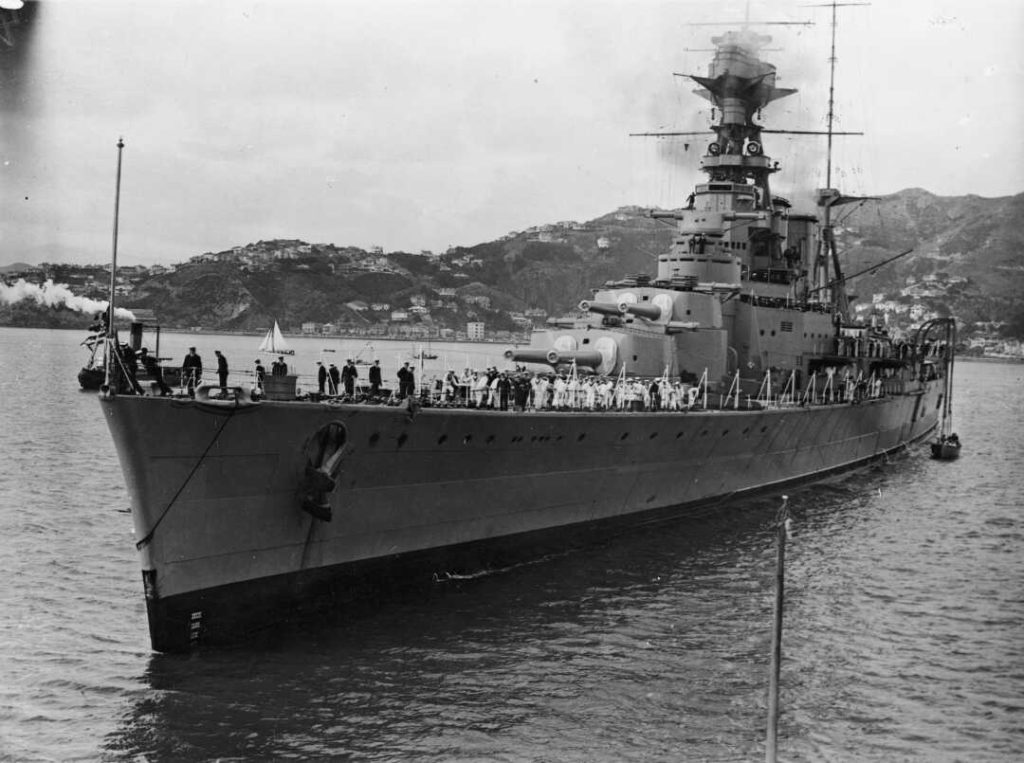
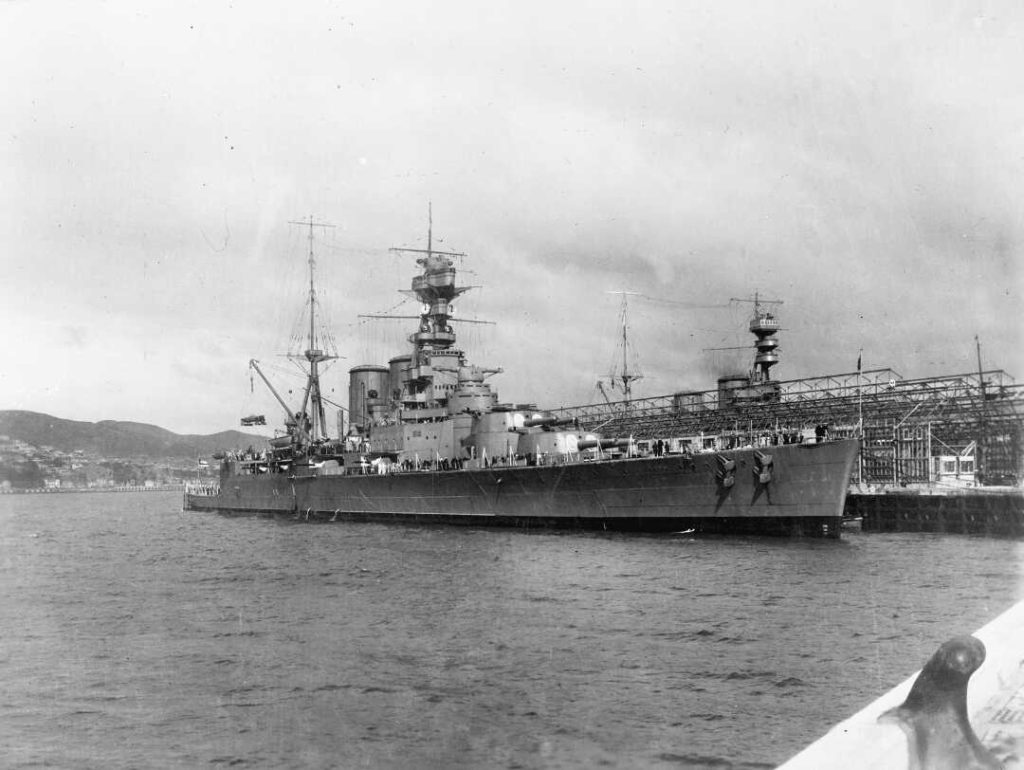
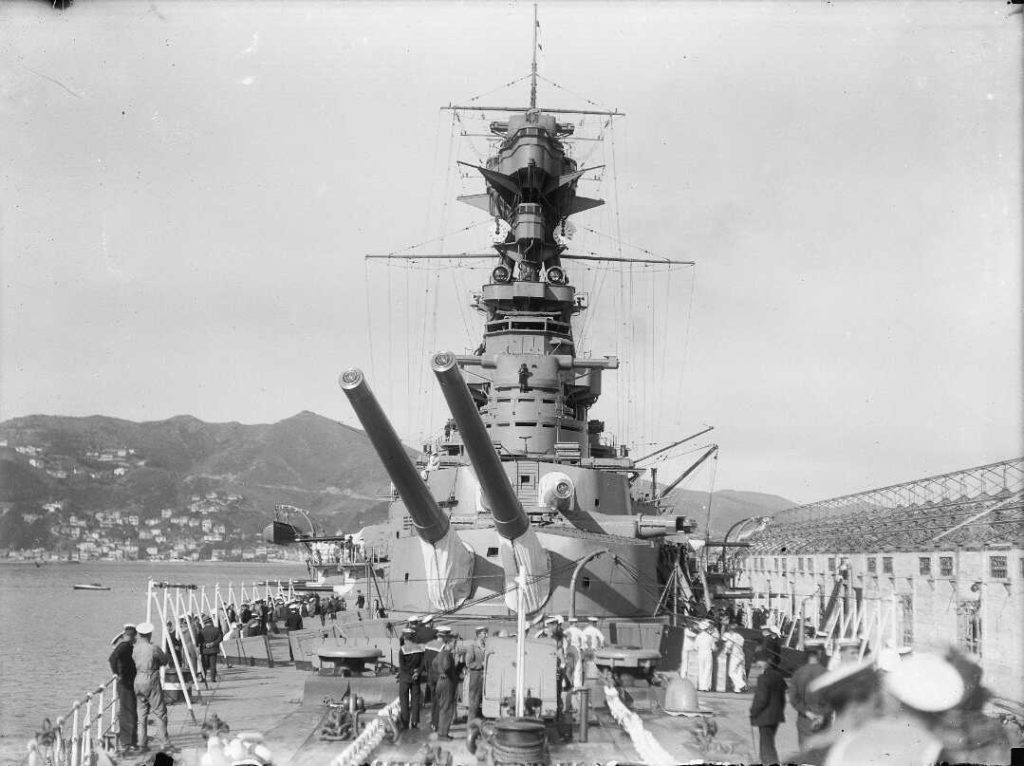
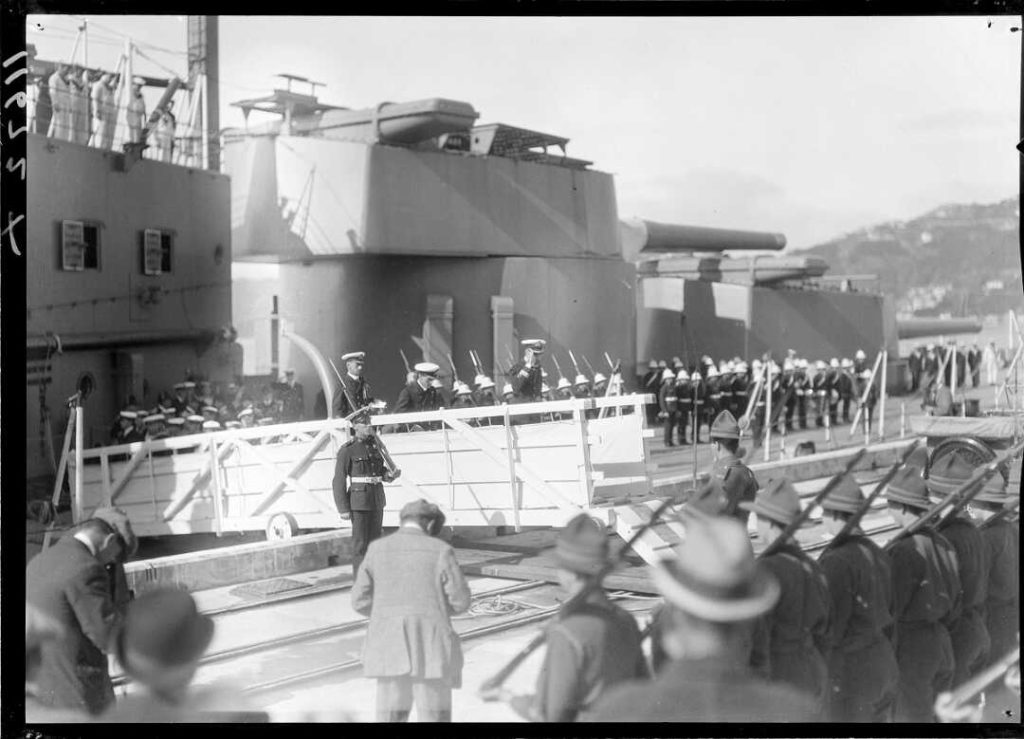
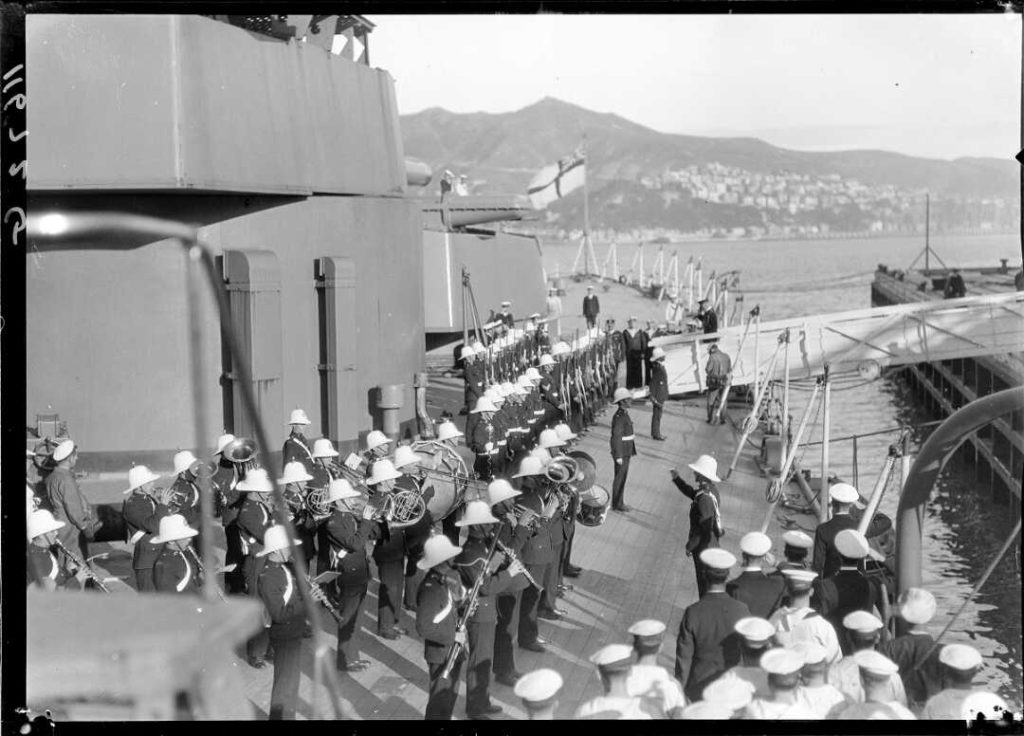
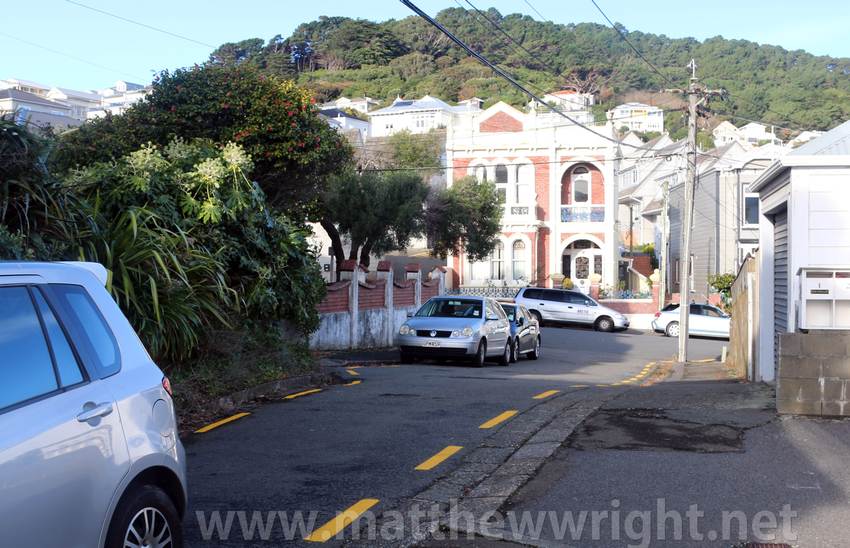

Recent Comments